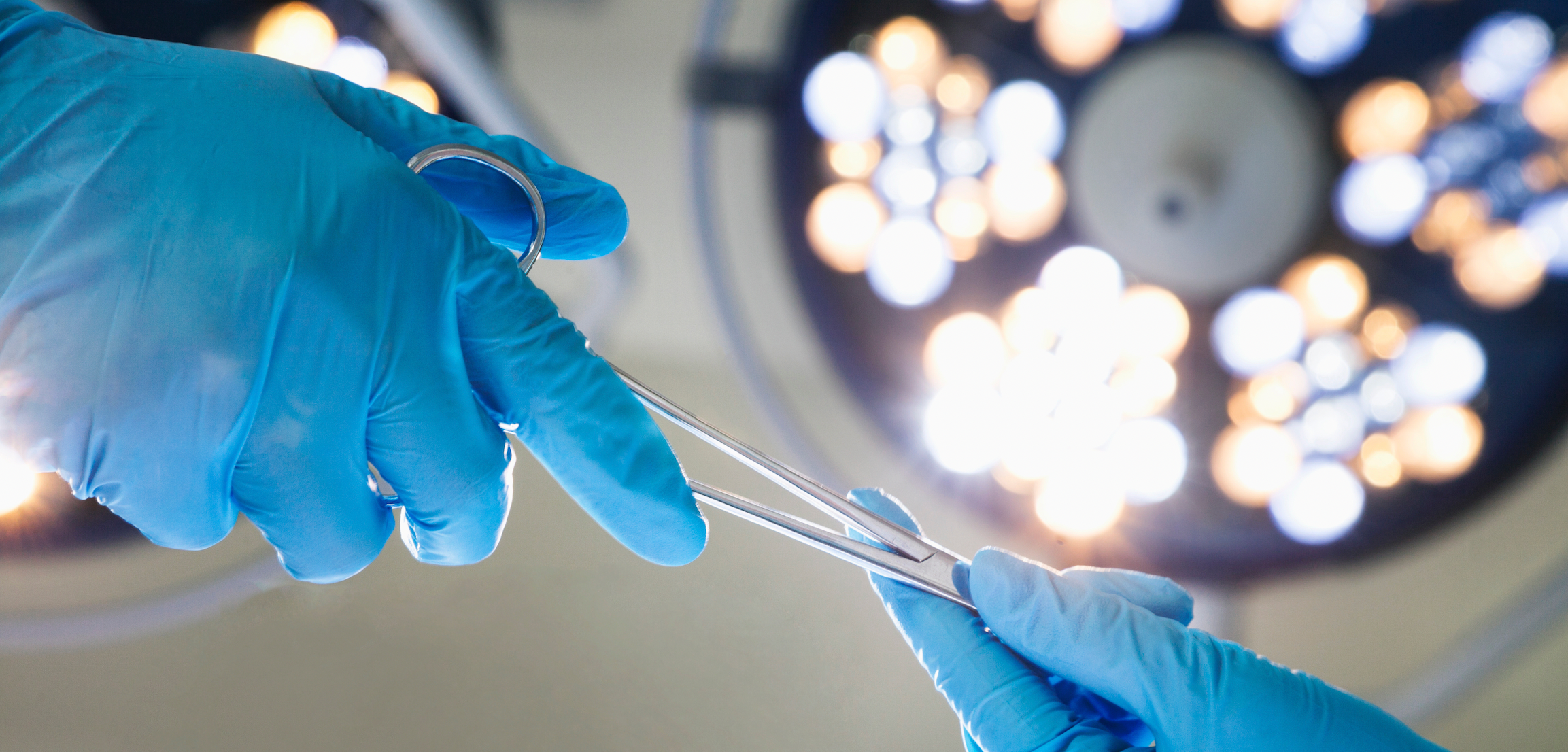
SSI surveillance tracks infections that occur after surgery in the area where it was performed. How can facilities help prevent these infections?
Gloved hands handing off a surgical tool.
(Adobe Stock, 55841465 by Xixinxing)

Surgical site infection (SSI) surveillance 1 is a process of monitoring and reporting infections that occur after surgery in the part of the body where the surgery occurred. It helps hospitals track patient outcomes and review or change their practices to prevent further infections. SSI surveillance is an essential component of infection prevention and control in health care settings. It helps monitor the incidence and impact of SSIs, identify risk factors and gaps in practice, and evaluate the effectiveness of interventions.
SSI surveillance requires accurate and timely data collection and reporting. Facilities must conduct routine and periodic data quality checks to ensure consistency, completeness, and reliability of reported data to the National Healthcare Safety Network (NHSN). 2 Data quality tools can help facilities conduct routine and periodic data quality assessments and improve their data quality practices.
Employing electronic screening algorithms that automatically identify potential SSI cases from various data sources can help reduce the workload and bias of manual chart review and increase the sensitivity and specificity of SSI detection. It is crucial to regularly validate and update electronic screening algorithms to ensure their performance and validity.
Validating Surgical Site Infection Surveillance
CDC recommends using the NHSN Patient Safety Component 1 to monitor and report data on health care–associated infections, including SSIs. This system provides standardized definitions, protocols, forms, and tools for SSI surveillance. It also allows for comparison and benchmarking among hospitals. CDC also offers guidelines and resources for preventing and controlling SSIs.
According to CDC and the World Health Organization, validating SSI surveillance is essential because it helps to detect the problem’s magnitude and assess the impact of any prevention or improvement intervention. 1,3 It also enables accurate comparison of infection rates across different settings and provides feedback to surgeons and other health care workers.
SSI surveillance can be validated using standardized definitions, data collection forms, and reporting procedures. It can also involve comparing the surveillance data with other sources of information, such as patient records, laboratory results, or postdischarge surveys. Additionally, it can include conducting a proactive risk assessment to identify and prioritize areas for improvement.
More tools and information are available, as follows:
A tool kit for data quality checks for reporting facilities by CDC. 4 This tool kit provides guidance for data quality activities suggested to be conducted annually, quarterly/monthly, and routinely by health care facilities to ensure that data reported to NHSN are accurate. The data quality components and tools are specific to 7 health care–associated metrics, including SSI.
A guideline for SSI events by CDC. 5 This guideline provides evidence-based strategies for SSI prevention and surveillance. It also defines the criteria and methods for SSI detection and reporting.
A study on validation of semiautomated SSI surveillance using electronic screening algorithms. 6 This study verified the validity of a semiautomated SSI surveillance system using screening algorithms in 38 categories of surgery.
One benefit of SSI surveillance is to prevent SSIs by providing feedback to surgeons and other health care workers on their performance and adherence to evidence-based guidelines. It also helps to improve patient outcomes and safety by reducing morbidity, mortality, and costs associated with SSIs. Finally, it helps to compare infection rates across different settings and identify areas for improvement or best practices.
You can use automated SSI surveillance methods using electronic data sources, such as pharmacy records, administrative claims, electronic health records, or natural language processing. The advantages of automated methods include reducing the workload and cost of manual data collection and validation. 1 They can also improve the sensitivity and timeliness of detecting SSIs, especially after discharge. They can facilitate the standardized and consistent application of surveillance definitions and criteria.
They can enable large-scale and cross-institutional surveillance and benchmarking.
However, the challenges of SSI surveillance are not inconsequential. They include the following:
Automated SSI surveillance methods also have limitations. They include the following:
References: